We travelled to Nawalgarh in the centre of the Shekhawati Region by local bus because Debbie decided that “we have to travel by bus at some point.” I had spent at least a week dropping ever more obvious hints that I would slightly rather go by car than on one of the overcrowded, dirty, smelly, uncomfortable, cramped, dented and downright dangerous local shitheaps. But I was ignored. Either that or I am too diplomatic for my own good.
So we purchased two tickets to travel on the ‘luxury’ service for the equivalent of US$1.50 and climbed aboard a battered bus that looked as if it had lost several encounters with a tank. It had tinted windows, reclining seats and aircon (meaning that the windows opened). “Please fasten your seatbelts.” Advised a sign painted in large red letters above the driver. “Good idea”, I thought. But there weren’t any. I gripped the seat in front instead. Its occupant then reclined his eat so far his head was all but in my lap. I hoped he didn’t play the pink oboe.
The driver drove the bus like a lunatic. Or perhaps he knew that in his next life he was going to return a rich man and couldn’t wait to get started. He didn’t seem to care which side of the road he occupied or whether anything was coming the other way, only veering away at the last possible moment. After several sharp intakes of breath, bracing myself for the impact that, mercifully, never happened, I decided it was preferable to look out of the side window.
We spent the 4 enjoyable (!) hours being periodically ejected from our seats as the bus bumbled over the bumpy road. I hoped the chap in front wouldn’t get the wrong idea. It started raining and, with the windows closed, the heat inside the bus built up quickly to sauna proportions.
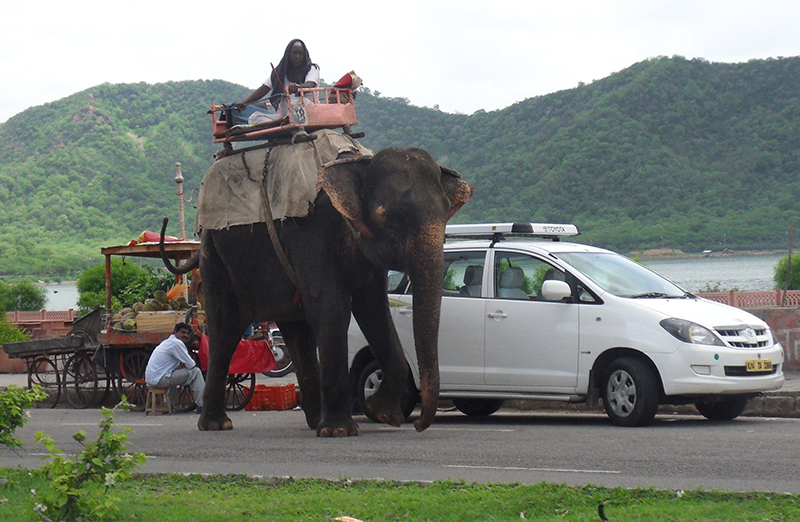 Peering through the windows, the countryside alternated between lush green fields filled with tall green crops and sandy desert. The green fields were the most fertile lands we have encountered in Rajasthan. Plainly, the monsoon rains had not failed here and, oddly enough, it lifted our spirits to know that these farmers would enjoy a decent crop.
Peering through the windows, the countryside alternated between lush green fields filled with tall green crops and sandy desert. The green fields were the most fertile lands we have encountered in Rajasthan. Plainly, the monsoon rains had not failed here and, oddly enough, it lifted our spirits to know that these farmers would enjoy a decent crop.
We arrived in Nawalgarh in the early evening, thankful that we still had four limbs. The rain still fell as we got off the bus and negotiated our way around puddles, mud and rubbish to shelter in a doorway. On the other side of the road were half a dozen rickshaws and we waited for the inevitable onslaught from the drivers. But none came. This was sleepy Nawalgargh where the city hassles and shakedowns don’t exist. We almost had to beg a driver to take us to our hotel.
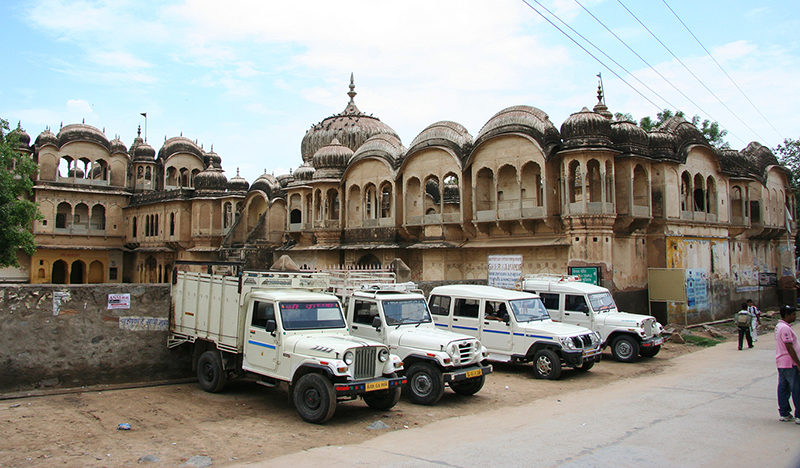 We spent the following day with a guide named Younis who turned up with a driver and a 4×4 that looked remarkably new. The price was ridiculously high. Despite being the off season the cost of the guide and transport was a good 20% higher than any previous day out. This seems to be a feature of Nawalgargh: the prices are stupidly expensive, even after we have beaten them down, and you would have to be stupid to come here.
We spent the following day with a guide named Younis who turned up with a driver and a 4×4 that looked remarkably new. The price was ridiculously high. Despite being the off season the cost of the guide and transport was a good 20% higher than any previous day out. This seems to be a feature of Nawalgargh: the prices are stupidly expensive, even after we have beaten them down, and you would have to be stupid to come here.
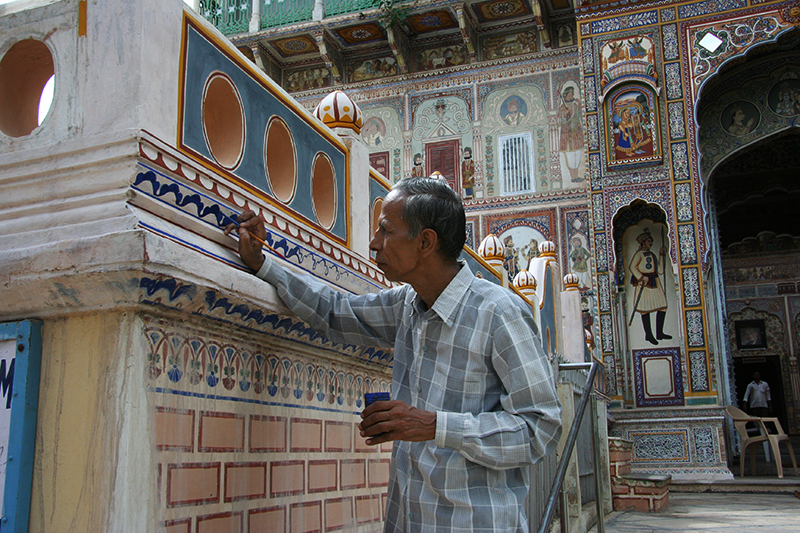 We started the day by visiting two of the local Havelis. Podar Haveli was built in 1902 and has been both preserved and restored. It was built in the classic Haveli tradition: a large wooden doorway is the main entrance in which is set a smaller door that gives access to the medana (outer courtyard or men’s courtyard).
We started the day by visiting two of the local Havelis. Podar Haveli was built in 1902 and has been both preserved and restored. It was built in the classic Haveli tradition: a large wooden doorway is the main entrance in which is set a smaller door that gives access to the medana (outer courtyard or men’s courtyard).
To one side is the salon where the merchant of the household would receive his guests. It would be lavishly decorated in order to impress, making use of marble, and would have images of Ganesh, god of wealth and good fortune. While the men reclined against bolsters discussing their business, the women could watch from a latticed or curtained gallery above.
The outer courtyard leads to the inner, women’s courtyard or zenana. Here the women of the household spent almost all their time in strict purdah (seclusion). The zenana was the main domestic area that included the kitchens, bedrooms, storerooms and galleries. Some of the bedrooms at the top of the Haveli were roofless for hot nights.
The wealth of the merchant was reflected in his Haveli by the number of courtyards, the number of galleries and the number of storeys it had. This meant plenty of wall space to house the elaborate murals that the wealthy Shekhawati merchants were fond of commissioning.
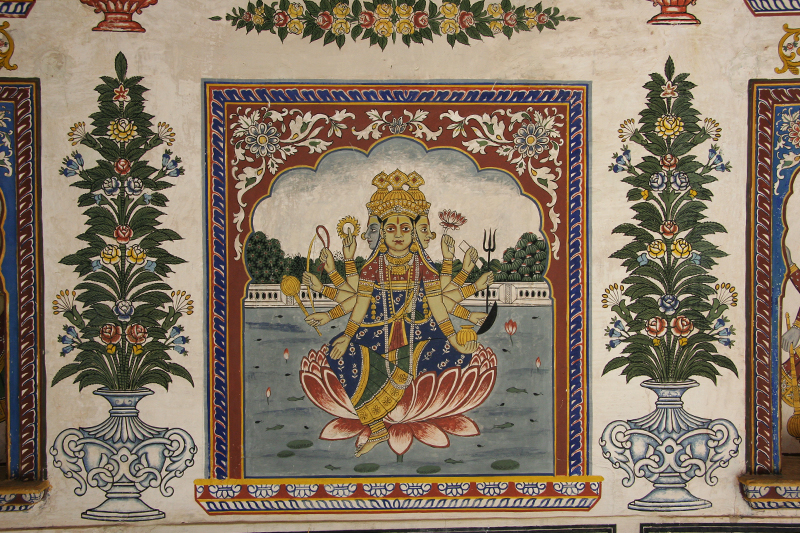 In the Podar Haveli, the murals included the usual religious scenes and some depicting cars and trains and British people. One curious panel depicts a bull’s head when viewed from one side and an elephant’s head when looked at from the other.
In the Podar Haveli, the murals included the usual religious scenes and some depicting cars and trains and British people. One curious panel depicts a bull’s head when viewed from one side and an elephant’s head when looked at from the other.
There was also a copy of the Shirimad Bhagwad, the Hindu holy book resting on an elaborately carved wooden rest, displays of wedding dresses from different castes and subcastes and some fine miniature paintings.
Bhagat Haveli, on the other hand, was unrestored and pretty much untouched so that the courtyards and rooms are exactly like they would have been (but without furniture) when fully occupied. It looked a bit sad and unloved and had been taken over by the pigeons.
Pigeons are everywhere throughout India. If there are billions of Indians then there are zillions of pigeons. The mess they make on the sidewalks and the sides and roofs of buildings is considerable and there appears to be no effort to control their numbers. In addition, they are deadly accurate marksmen. In the past two weeks, I have been hit by pigeon poop on the head, on the shoulder and on the leg. I am not sure whether that is bad luck or whether I should start playing the lottery.
We headed into the Aravalli hills to the town of Lohargal where the road shapes steeply uphill over cobble stones that are so uneven that we are reduced to a crawl. When we cannot go any further, we got out and walked further uphill until we reached a bathing area known as Shuryakund.
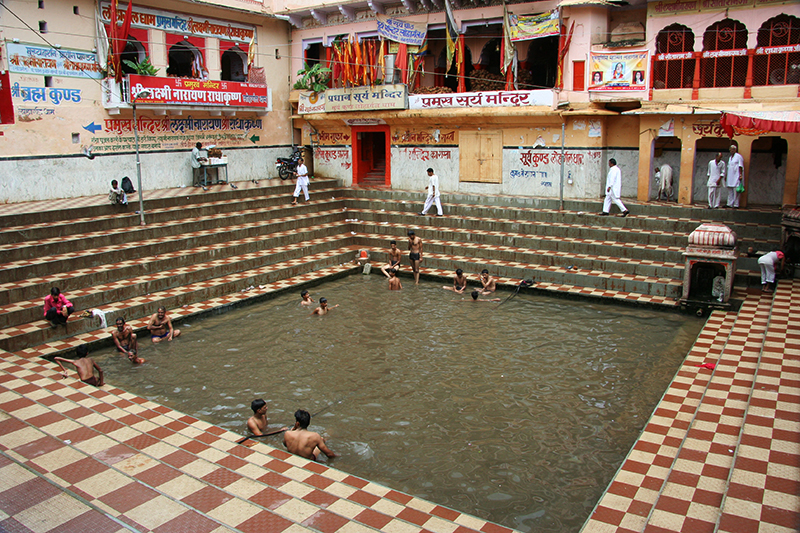 It is a holy bathing well that is fed by a spring that never dries and which attracts a stream of pilgrims who come to immerse themselves in the sacred water. They also bring the ashes of their dead to empty into the pool and take away a bottle of the water to drink later. It is square shaped with a series of steps that lead down to dirty brown water that is sectioned into a separate male and female area. Men and boys played happily on one side, jumping, diving and swimming. They have only to be half an inch under water to disappear from sight completely.
It is a holy bathing well that is fed by a spring that never dries and which attracts a stream of pilgrims who come to immerse themselves in the sacred water. They also bring the ashes of their dead to empty into the pool and take away a bottle of the water to drink later. It is square shaped with a series of steps that lead down to dirty brown water that is sectioned into a separate male and female area. Men and boys played happily on one side, jumping, diving and swimming. They have only to be half an inch under water to disappear from sight completely.
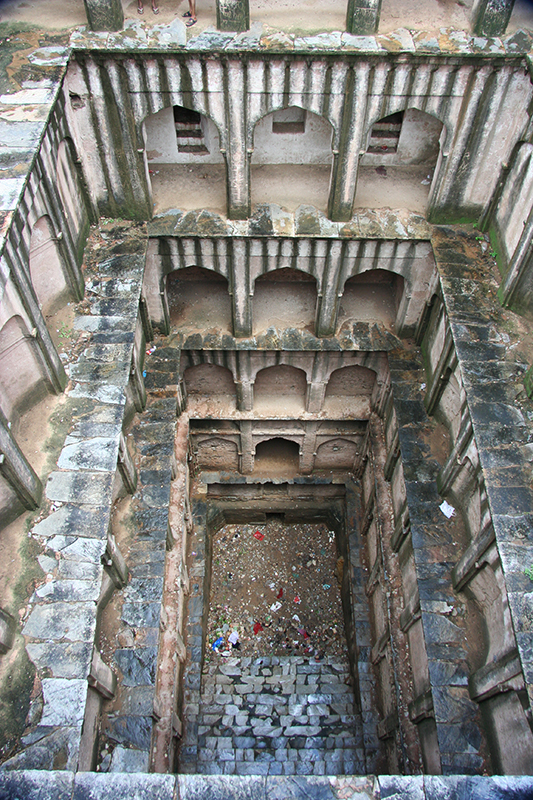 On the way back to the main road, next to one of the many banyan trees that surround village, is an old step well (Boari) that delves 40 metres into the earth. Like most of the others in Rajasthan it is completely dry and has been so for the last 5 years because of the lack of rain. Younis tells us that in some parts of Shekhawati the wells have to be driven 120 metres into the earth to find water.
On the way back to the main road, next to one of the many banyan trees that surround village, is an old step well (Boari) that delves 40 metres into the earth. Like most of the others in Rajasthan it is completely dry and has been so for the last 5 years because of the lack of rain. Younis tells us that in some parts of Shekhawati the wells have to be driven 120 metres into the earth to find water.
We headed off towards the town of Dundlod stopping on the way at the village of Parsurampura where there is a cenotaph to Maharaja Sardul Singh that has a complicated painted ceiling depicting battles, elephant fights and court life in the mid 18th century. It is remarkably well preserved by a Brahmin priest who has brightened the area up with pretty flower beds of roses and jasmine that surround the chhatri and fill the air with perfume.
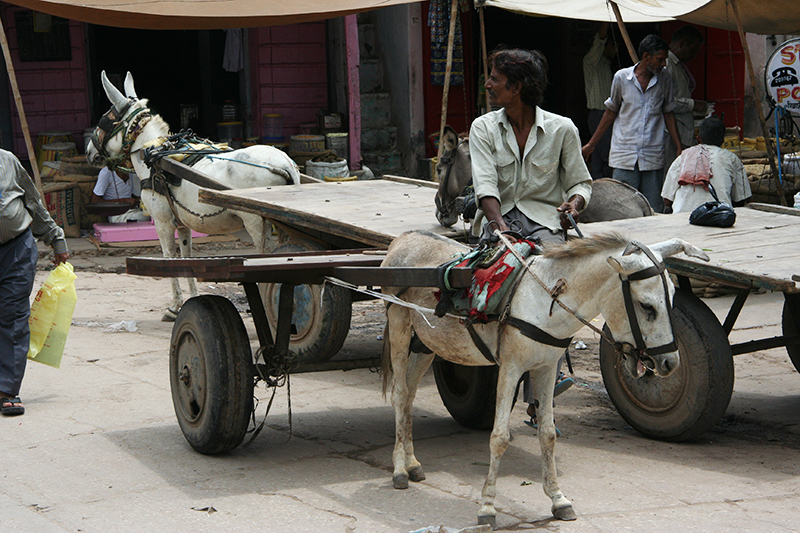 Dundlod seems a deserted place; a peaceful, back-in-time village that reputedly has excellent schools and hospital – an odd achievement given the sleepiness of all around. A few of the village men sat under shelter playing cards and even the few wandering cows were bored enough to chew cardboard. I felt like Clint Eastwood arriving at one of those frightened little towns in the Spaghetti Westerns.
Dundlod seems a deserted place; a peaceful, back-in-time village that reputedly has excellent schools and hospital – an odd achievement given the sleepiness of all around. A few of the village men sat under shelter playing cards and even the few wandering cows were bored enough to chew cardboard. I felt like Clint Eastwood arriving at one of those frightened little towns in the Spaghetti Westerns.
The village has what is euphemistically called a fort built in 1750 but is just a big house encompassed by a wall. Inside is the headquarters of the region’s Royal Equestrian and Polo Centre where horse safaris leave for treks of up to 2 weeks. It is India’s largest Marwari horse-breeding facility and Debbie had been keen to ride some of these animals which have a reputation for being fast, furious beasts. Unfortunately, everything was shut down until September because the monsoon makes the riding difficult and treacherous. Another time maybe? Anyway, I think she has had enough excitement with the buses – we still have to get back to Jaipur!

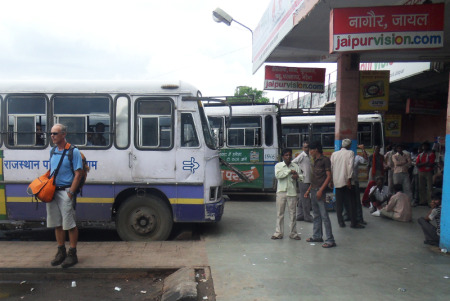
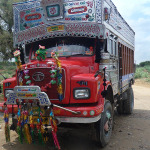
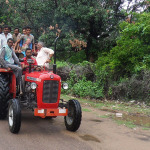
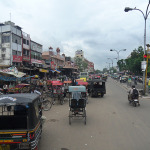
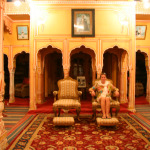
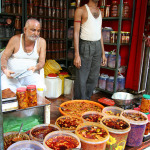
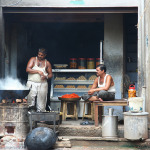
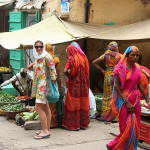
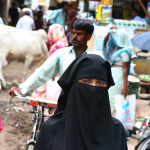
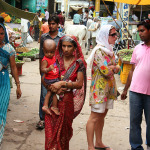
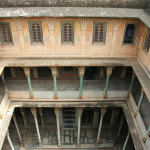
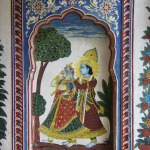
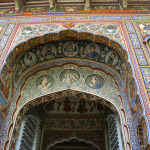
No comments yet.